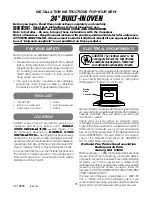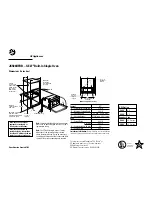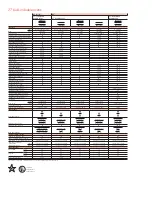
Microwave operation
57
The material and shape of the crockery
used affect the reheating and cooking
durations.
Heat distribution is more even in round
and oval-shaped shallow containers.
Food is reheated more evenly in these
containers than in square containers.
Suitable crockery
Fire hazard due to inflammable
materials.
Disposable containers made out of
plastic, paper or other inflammable
materials can ignite, causing damage
to the oven.
Do not leave the oven unattended
when reheating or cooking food in
disposable containers made of
plastic, paper or other inflammable
materials.
You can use the following crockery and
material:
– Heat-resistant glass and ceramic
glass
Exception: crystal glass as it contains
lead and may crack.
– Porcelain
– Without metallic decoration
Metallic decoration (e.g. gold rims
or cobalt blue) can cause sparking.
– Without hollow knobs and handles
Moisture can gather in the hollow
knobs and handles. When the
moisture evaporates, pressure can
build up and the item can explode.
– Unpainted stoneware and stoneware
with underglaze paints
Risk of injury caused by hot
crockery.
Stoneware can get hot.
Wear oven gloves when using
stoneware.
– Plastic containers and plastic
disposable containers with the
Microwave
function
Tip:
To protect the environment, avoid
the use of disposable containers.
Plastics must be heat-resistant to a
minimum of 110 °C. Otherwise the
plastic may melt and fuse with the
food.
Only use plastic containers with the
Microwave
function.
Do not use plastic containers with
the
MW +Auto roast
,
MW + Fan
plus
,
MW + Grill
or
MW + Fan
grill
functions.
– Microwave-safe plastic containers
Special plastic containers designed
for use in microwave ovens are
available from retail outlets.
– Styrofoam containers
For briefly heating food
Содержание 11 196 580
Страница 111: ...Installation I N S T A L L A T I O N 111 Side view A 47 mm ...
Страница 132: ...M Nr 11 196 580 02 en GB H 7840 BM ...
















































